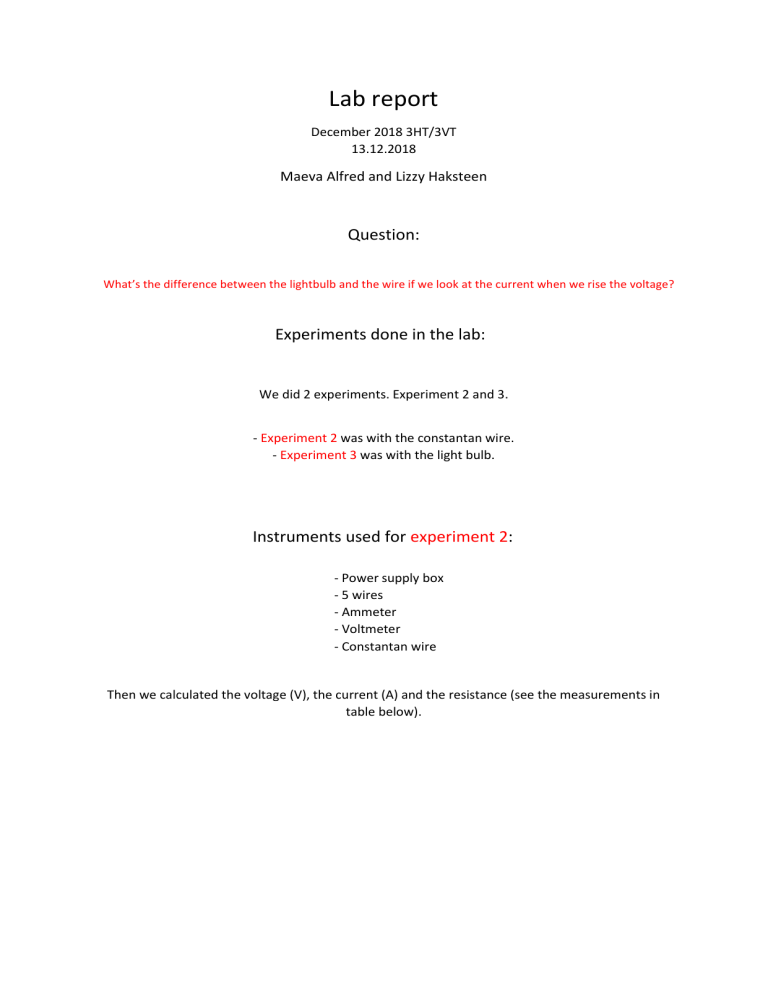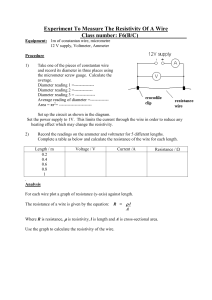
Lab report December 2018 3HT/3VT 13.12.2018 Maeva Alfred and Lizzy Haksteen Question: What’s the difference between the lightbulb and the wire if we look at the current when we rise the voltage? Experiments done in the lab: We did 2 experiments. Experiment 2 and 3. - Experiment 2 was with the constantan wire. - Experiment 3 was with the light bulb. Instruments used for experiment 2: - Power supply box - 5 wires - Ammeter - Voltmeter - Constantan wire Then we calculated the voltage (V), the current (A) and the resistance (see the measurements in table below). Instruments used for experiment 3: - Power supply box - 5 wires - Ammeter - Voltmeter - Constantan wire Interpretation of the diagrams So first if you look at the relation between the voltage and the current, you can see that the current is not growing with the same amount. So that also means that the resistance is not always the same either. You calculate the resistance by dividing voltage (U) by current (I). You can see the differences by making a (I,U) diagram. Then you see that the bulb has a non-linear resistance and that the wire has linear resistance. Conclusion The difference between the wire and the bulb is: That the resistance of the wire is staying the same, but that the resistance of the bulb is rising, every time you rise the voltage. Experiment 2 13.12.2018 V A 0 0 0 0,5 0.6 0.83 1 1.1 0.9 1.5 1.8 0.83 2 2.5 0.8 2.5 3 0.83 3 3.8 0.79 Experiment 3 13.12.2018 V A 0 0 0 1 170 mA 5.9 2 255 mA 8.9 3 320 mA 9.4 4 370 mA 10.8 5 420 mA 11.9 6 460 mA 13.0






